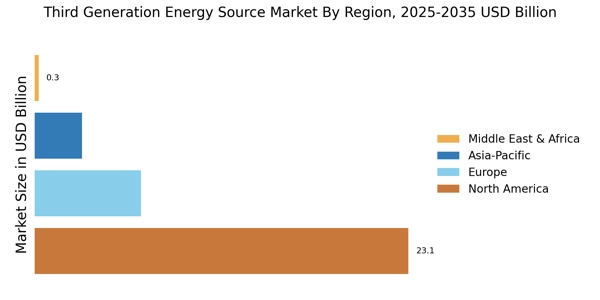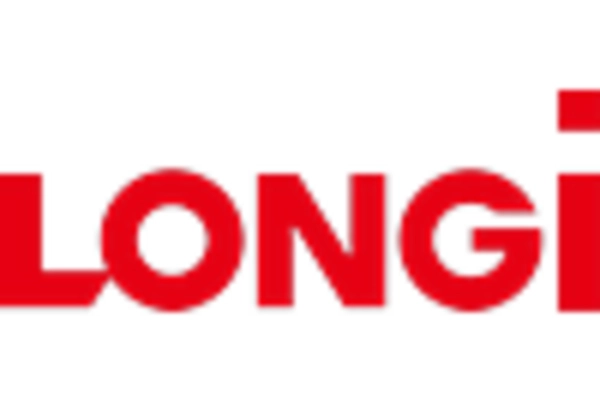Technological Advancements
Technological advancements are a key driver in the Third Generation Energy Source Market. Innovations in energy generation, storage, and distribution technologies are enhancing the efficiency and viability of renewable energy sources. For example, advancements in solar panel efficiency and energy storage systems have made it possible to harness and store energy more effectively. The market for energy storage solutions is projected to grow significantly, with estimates suggesting a compound annual growth rate of over 20% through 2030. These technological improvements not only reduce costs but also increase the reliability of third generation energy sources, making them more attractive to consumers and businesses alike.
Government Incentives and Policies
Government incentives and supportive policies play a crucial role in shaping the Third Generation Energy Source Market. Many countries have implemented favorable regulations and financial incentives to promote the adoption of renewable energy technologies. For instance, tax credits, grants, and subsidies are increasingly available for businesses and consumers investing in third generation energy solutions. These initiatives not only encourage innovation but also enhance the competitiveness of renewable energy sources against traditional fossil fuels. As governments continue to prioritize energy transition and sustainability, the Third Generation Energy Source Market is likely to see accelerated growth, driven by these supportive frameworks.
Rising Demand for Renewable Energy
The Third Generation Energy Source Market is experiencing a notable increase in demand for renewable energy solutions. This trend is driven by a growing awareness of climate change and the need for sustainable energy sources. According to recent data, renewable energy sources accounted for approximately 30% of total energy consumption in 2025, indicating a shift towards cleaner alternatives. This rising demand is likely to propel investments in third generation energy technologies, which promise higher efficiency and lower environmental impact. As consumers and businesses alike seek to reduce their carbon footprints, the Third Generation Energy Source Market is positioned to benefit significantly from this transition, potentially leading to a more sustainable energy landscape.
Increasing Energy Security Concerns
Concerns regarding energy security are becoming more pronounced, influencing the Third Generation Energy Source Market. As geopolitical tensions and supply chain vulnerabilities persist, nations are seeking to diversify their energy sources to enhance resilience. The transition to third generation energy solutions, such as solar and wind, offers a pathway to reduce dependence on imported fossil fuels. This shift not only addresses energy security but also aligns with broader environmental goals. As countries prioritize energy independence, the Third Generation Energy Source Market is likely to experience growth, driven by investments in local renewable energy projects and infrastructure.
Corporate Sustainability Initiatives
The Third Generation Energy Source Market is increasingly influenced by corporate sustainability initiatives. Many companies are adopting ambitious sustainability goals, aiming to reduce their carbon emissions and transition to renewable energy sources. This shift is often driven by consumer demand for environmentally responsible practices and the need to comply with regulatory requirements. As corporations invest in third generation energy technologies, they contribute to the overall growth of the market. Reports indicate that businesses that prioritize sustainability are likely to outperform their competitors, further incentivizing the adoption of renewable energy solutions within the Third Generation Energy Source Market.



















Leave a Comment